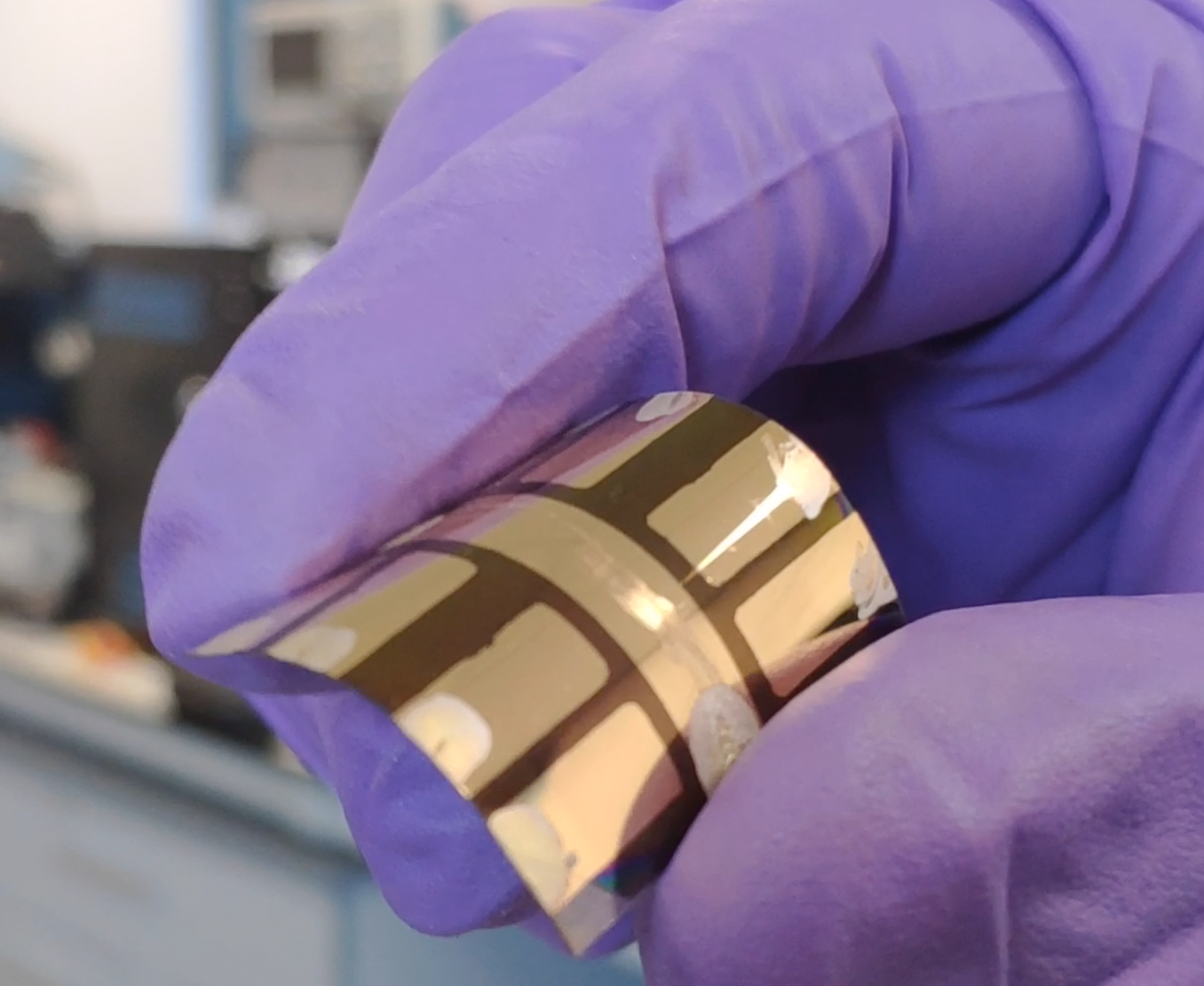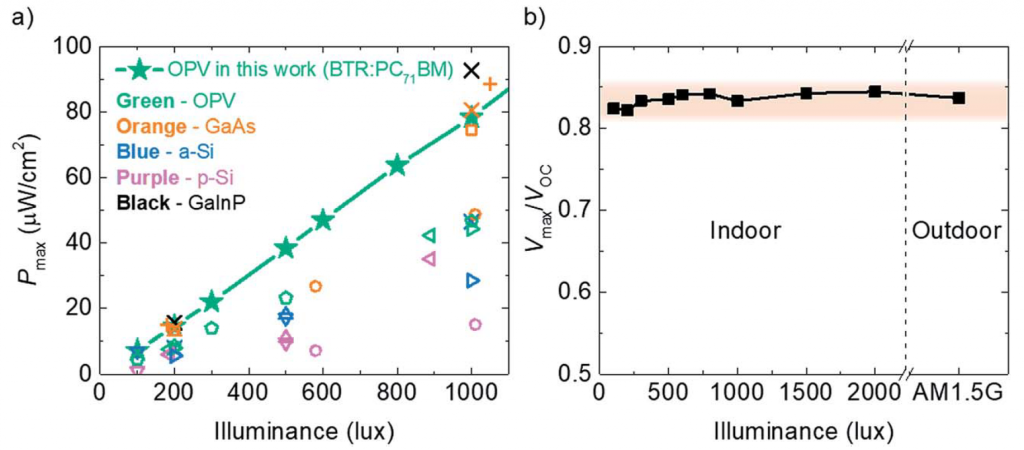
CASE STUDY:
Organic Photovoltaics (OPV) for indoor application
Overview
Organic solar cells use carbon-based materials and organic electronics – rather than silicon – as a semiconductor to produce electricity from the sun. At SPECIFIC, our research is concentrated on upscaling, stabilising and using new materials for indoor PV using organic materials. We have achieved outstanding indoor performance for OPV solar cells, comparable to the best indoor cells in the market.
A fluorescent lamp box was used to mimic a typical indoor environment and performance was examined in a broad range brightness.
This study of indoor OPV performance achieved higher efficiency than that achieved from non-fullerene acceptors, which show higher efficiency under normal sun conditions. By comparison, the performance is much higher than the leading indoor PV – silicon-based PV. The study produced stability data for non-fullerene acceptor-based OPV devices. A 28% efficiency was demonstrated under a 1,000 lux fluorescent lamp, generating a maximum power output of 78 µW/cm2. The active materials used by these devices were a small molecule donor and a fullerene acceptor – namely BTR:PC71BM.
With this system, a very stable Vmax to Voc ratio was observed across a wide range of light intensities from one sun to 100 lux, which enabled maximum power point (MPP) tracking using a low-power consuming method.
Aim
Organic solar cells are flexible, cheap to manufacture, and suitable for manufacture as large surfaces in a printing press, making them competitive to other PV technologies under low light conditions. This new approach to powering indoor applications could provide the Internet of Things with an inexpensive source of renewable energy, potentially replacing batteries. Research into OPV aims to improve efficiency for ambient light applications.
Impact

